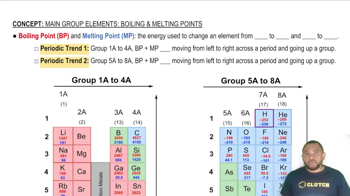Textbook Question
Which solid has the highest melting point? Why? C(s, diamond), Kr(s), NaCl(s), H2O(s)
2374
views




Which solid has the highest melting point? Why? C(s, diamond), Kr(s), NaCl(s), H2O(s)
Which solid in each pair has the higher melting point and why?
a. TiO2(s) or HOOH(s)
b. CCl4(s) or SiCl4(s)
c. Kr(s) or Xe(s)
Which solid in each pair has the higher melting point and why? d. NaCl(s) or CaO(s)
An oxide of rhenium crystallizes with the unit cell shown here (rhenium=gray; oxygen=red). What is the formula of the oxide?
Identify the structure of each of the two unit cells shown in Problem 52 as the rock salt structure, zinc blende structure, fluorite structure, antifluorite structure, or none of these.
Classify each of the following as a component of a silicate ceramic, an oxide ceramic, or a nonoxide ceramic. a. B4C